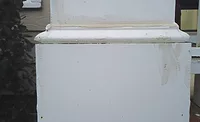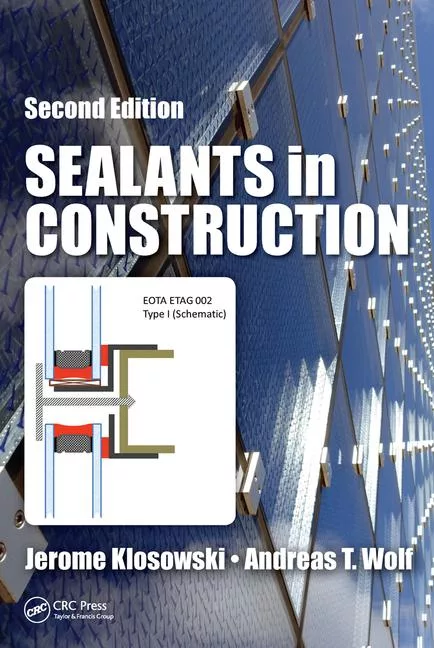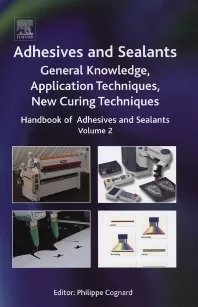Strategic Solutions
Formulation and Availability of Building and Construction Adhesives, Sealants, and Other Materials
Engineers, architects, specifiers, facility managers, and homeowners must spend time analyzing what performance levels can be obtained by the adhesive and sealant products that are available to them for the environments in which they are being used.
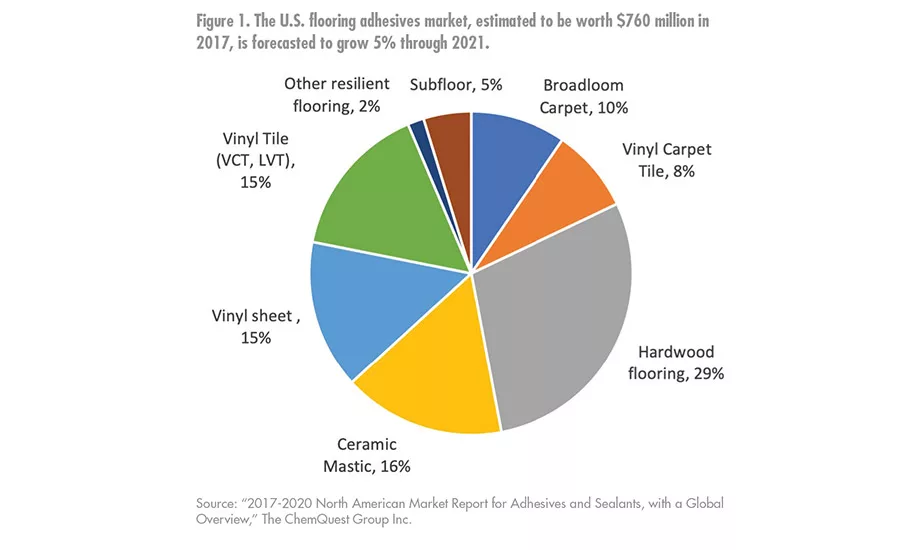
Figure 1. The U.S. flooring adhesives market, estimated to be worth $760 million in 2017, is forecasted to grow 5% through 2021.
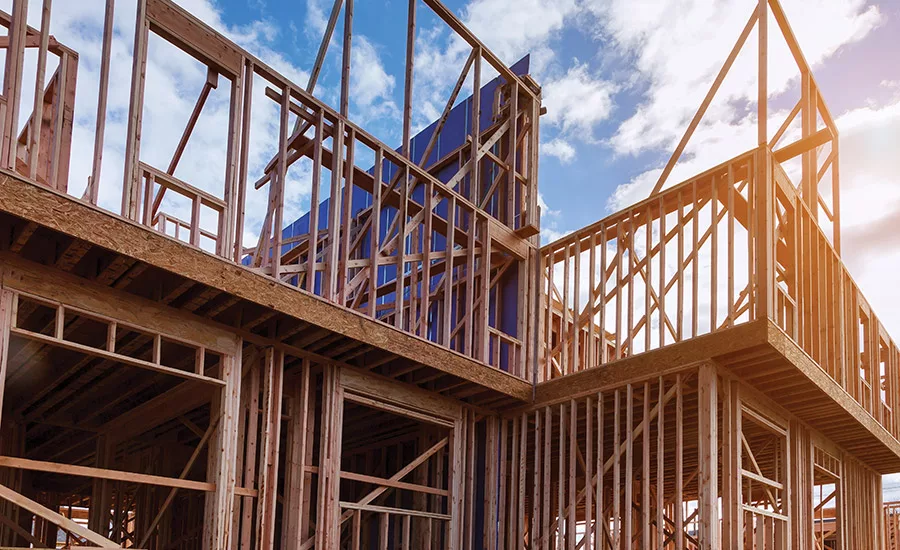
With increasing consolidation among adhesives manufacturers and the raw material suppliers that support them, global product formulation and availability of materials used in these formulations continue to grow in importance. When we factor in pending regulatory control by federal and state authorities toward the health and safety of personnel at the plant level, as well as field applicators of the various building and construction formulations, supply/demand complexities become apparent.
What does all of this mean for engineers, architects, specifiers, and facility managers who desire to have access to use the best product for their application? The answer may soon be that the best products—those that will perform at the highest level for the longest period of time—may become obsolete, in favor of other products that offer average levels of performance but meet the regulatory requirements in place today and increasing globally for the future.
Diisocyanate Scrutiny
One example can be found in polyurethane-based building and construction adhesives, which are under regulatory scrutiny due to diisocyanates. Proposed restrictions to limit the use of diisocyanates to 0.1% by weight for use on their own or in mixtures are under serious consideration in the European Union (EU).1 Concern surrounds the risk to human health, particularly a risk of occupational asthma in workers. Asthma-related concerns often surround spray applications when workers who may be sensitized risk inhaling diisocyanate fumes. For years, applicators have been required to wear appropriate personal protective equipment (PPE) when working with these materials; however, to some, those measures are inadequate.
If approved, the EU restrictions will be implemented over a multi-year period to allow a gradual phasing in of a combination of technical and organizational restrictions, as well as standardized training for workers engaged in manufacturing or field applications who come in contact with materials containing diisocyanates. Although the restrictions are technically being set in the EU, the limitation may be felt for global manufacturers throughout all regions.
Applications Conducive to Waterborne Adhesives
- Civil engineering, flooring, modular housing, panel and framing, wallcovering, manufactured housing, and mobile homes
- Items not requiring high lap shear/structural strength (e.g., panels, laminated sandwich panels, SIP, subflooring, floor covering)
- Parts requiring LEED and GREENGUARD certification
Key Technical Requirements
- Quick drying under variable conditions, summer/winter, and high initial tack strength
- Low/no VOC, low odor/fumes and HAPs, durability, insulative/sealing capability, LEED and GREENGUARD regulations
- Mating surface cleanliness and ability to properly cure within line time/space constraints; easy cleanup important
- High shear and cohesion values at temperature extremes, high adhesion values for dissimilar and difficult-to-bond materials, resistance to long-term fatigue
- Use existing application equipment; waterborne adhesive need to be process-friendly and meet station tact time
- Adherence to multiple substrates; up to 50 psi lap shear strength for non-high lap shear/structural apps
- ManHomes—ACL 5 design factor for load-bearing wall. Meet strict requirements—rack test (push on wall from top to bottom)
- ASTM D3930: Specification for Adhesives for Wood-Based Materials for Construction of Manufactured Homes
Key Joining Requirements
- Vibration damping, insulative sealing, surface bonding, and gap filling
- Waterborne adhesives have higher volume solids than most solvent-based adhesives; have good perceived value. Problem with curing/drying time, particularly when assembling homes in the field
- Long-term resistance to stress from high wind, torque from earthquake
- Complete interface solid surface joining
When asked if products can be reformulated to perform the same, the world’s largest manufacturer of isocyanates responded, “This presents a burden to the raw material supplier. Our clients are asking us to provide the lower level monomer, which is possible but requires extra effort at the production site which means more money and time, because of the distillation process. The longer you distillate, the less monomer, but there’s a loss in production time to achieve that goal, and perhaps a slight increase in price.”
It’s worthwhile to note that in the world of adhesives and sealants, which are typically not spray applied, there is in reality only a small concern of exposure to diisocyanates. The largest square-foot application could be as an adhesive for wood flooring, where relatively large areas of floor space may be applied at once, potentially subjecting the installer to risk. According to one industry expert, “Odor is actually a bigger concern than exposure. It’s more disruptive to folks and instills a fear that one could get sick, more than a likelihood.”
Product Selection
When contractors, DIYers, and homeowners have a choice, they are going to select the product that is least disruptive to their working environment, is easiest to apply, and has the lowest odor and fastest cure. Another leading raw material supplier sums it up this way: “There are still many of those jobs and applications where a two-component (2K) urethane is the right answer to the question, or a 1K moisture cure urethane is the right answer to the question. They’re very versatile products. They give tenacious bond. However, there’s a whole host of other areas where the contractor or the specifier might be able to use a product that’s easier to use like a 1K waterborne material. Perhaps they don’t need phenomenal adhesion. They know they can get very good adhesion, but they like the idea that it’s easy to use. Those same products also typically have very low odor, which addresses that other driver—that this contractor can do this work during the day. There’s not a lot of odor filling up the building from any kind of major solvents in the systems.”
Engineers, architects, specifiers, facility managers, and homeowners must spend time analyzing what performance levels can be obtained by the products that are available to them for the environments in which they are being used. The list of available materials is broader now than it ever has been. Whether 1K or 2K, whether an extremely low monomer is needed, whether a silane-terminated prepolymer, or a polyurethane dispersion, products are available globally that can address the particular requirements of specific jobs.
Reference
- “EU Commission proposes REACH restriction for diisocyanates,” Chemical Watch, September 20, 2019, https://chemicalwatch.com/82307/eu-commission-proposes-reach-restriction-for-diisocyanates#overlay-strip.
Looking for a reprint of this article?
From high-res PDFs to custom plaques, order your copy today!





